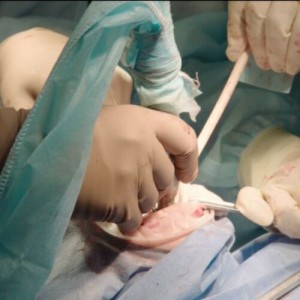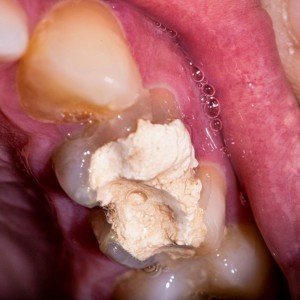
Pediatric patients with deep caries: which type of anesthesia to choose?
Alessandra Abbà
In pediatric patients with deep carious permanent, soft tissue anesthesia doesn’t always assure pulpal anesthesia and this can lead to a painful and even traumatic experience. In these cases, the most common technique used for anesthetizing mandibular teeth is the inferior alveolar nerve block (IANB). However, evidence of IANB success is currently lacking.
So which is the best approach? In a cohort study published in Pediatric Dentistry in 2018 the authors try to give a solution. The aim of their study was to evaluate:
- pre-operative pulpal anesthesia following an inferior alveolar nerve block (IANB);
- preoperative pulpal anesthesia following a supplemental intraligamentary injection (SII);
- intraoperative pulpal anesthesia.
MATERIALS AND METHODS
Sixty molars of patients aged 10.9±2.9 years old were included in the study. 49% of teeth were diagnosed with normal pulp, 28% with reversible pulpitis, and 23% with irreversible pulpitis. Their level of anxiety was calculated to be from none to mild. Vital permanent mandibular molars with deep caries were first anesthetized with IANB. The anesthetic agent used in all steps of this study was four percent articaine with epinephrine one in 100,000 (Septanest SP; Septodont, Saint-Maur-des-Fossés, France). Preoperative pulpal anesthesia was assessed, and success was defined when the tooth had no response to the sensibility tests for twice. In cases with failed preoperative pulpal anesthesia, an SII was administered and pulpal anesthesia was reassessed. A maximum of three SIIs was allowed. During treatment, the success of pulpal anesthesia was determined using the Wong-Baker FACES Pain Rating Scale (WBFPS). The success of intraoperative pulpal anesthesia was set the value four or less of the scale. In failed cases, other supplemental injections, such as an intrapulpal injection, were added. However, the anesthetic solutions must not exceed the calculated maximum dosage (seven mg per kg but not in excess of 500 mg).
RESULTS
The success of preoperative pulpal anesthesia following IANB was 26.7%. In cases with failed IANB, SIIs were administered.
The overall cumulative success rate of preoperative pulpal anesthesia was 80%.
Intraoperatively, the success of pulpal anesthesia was 72.9%.
CONCLUSIONS
Inferior alveolar nerve block often produces insufficient pulpal anesthesia in young permanent mandibular molars with deep caries. A supplemental intraligamentary injection can greatly enhance preoperative pulpal anesthesia. The use of a sensibility test to confirm pulpal anesthetic status of the inflamed pulpal tissue seems to be insufficient.
For additional informations:
How Effective are Inferior Alveolar Nerve Block and Supplemental Intraligamentary Injections in Pediatric Patients with Deep Carious Permanent Mandibular Molars?
 Related articles
Related articles
Pediatric dentistry 09 October 2025
Smart materials in pediatric dentistry: Revolutionizing care for enhanced outcomes
In the realm of pediatric dentistry, smart materials are reshaping conventional approaches, introducing a responsive and tailored dimension to treatment.
Pediatric dentistry 24 September 2025
The objective of this study was to survey members of the American Academy of Pediatric Dentistry (AAPD) regarding their use of behavior management techniques.
Pediatric dentistry 08 August 2025
Management of pigmented gingiva in child patient: a new era to the pediatric dentistry
Gingival health in the form of size, shape, consistency and appearance are essential components responsible for an attractive smile as well as may cause unpleasant appearance
Pediatric dentistry 17 July 2025
Pediatric restorative dentistry is a dynamic combination of ever-improving materials and tried-and-true techniques.
 Read more
Read more
Much like EMTs rushing to the scene after an accident, stem cells hurry to the site of a skull fracture to start mending the damage. A new finding has uncovered the signaling mechanism that triggers...
Products 05 November 2025
SimplyTest has launched a groundbreaking saliva-based test to detect high-risk strains of oral human papillomavirus (HPV), a major cause of oropharyngeal cancers.
News 05 November 2025
Perimetrics, Inc., a dental technology company pioneering quantitative diagnostics, announced today that the U.S. Food and Drug Administration (FDA) has granted clearance for the InnerView...
News 05 November 2025
On October 15, open enrollment for Medicare began nationwide. Hundreds of thousands of seniors in New Jersey will once again face the challenge of finding the right Medicare coverage, including the...
Digital Dentistry 04 November 2025
Digitalisation is an expanding field in dentistry and implementation of digital teaching methods in dental education is an essential part of modern education.















